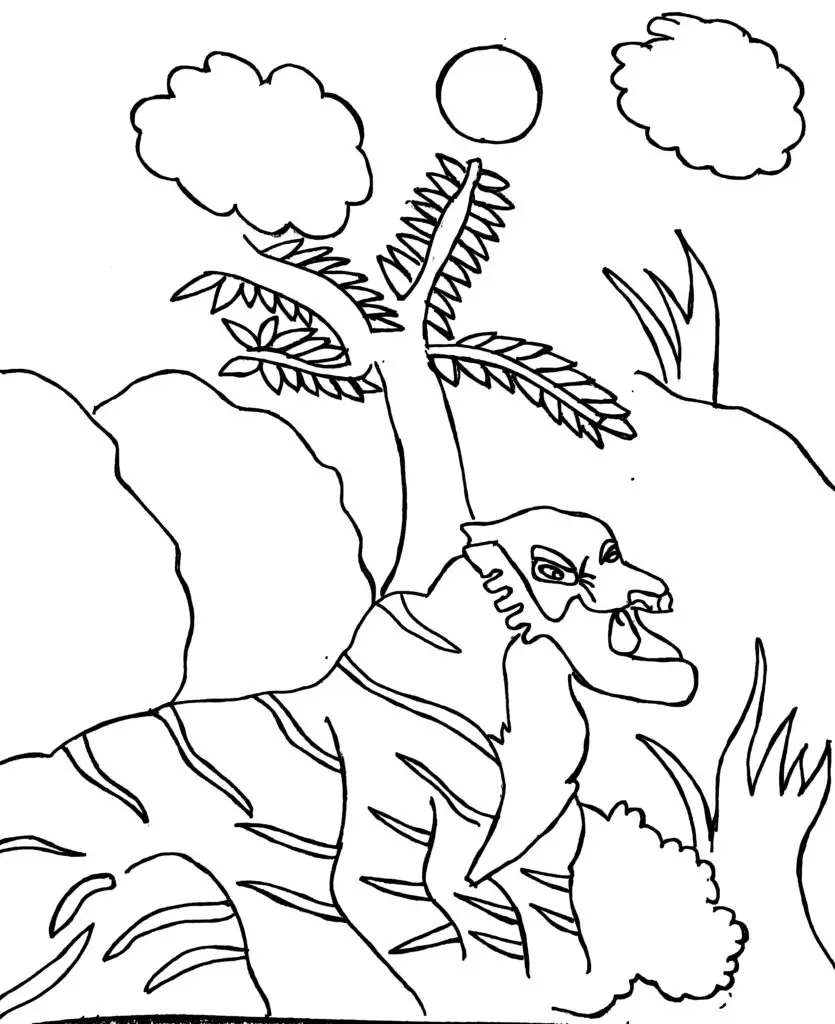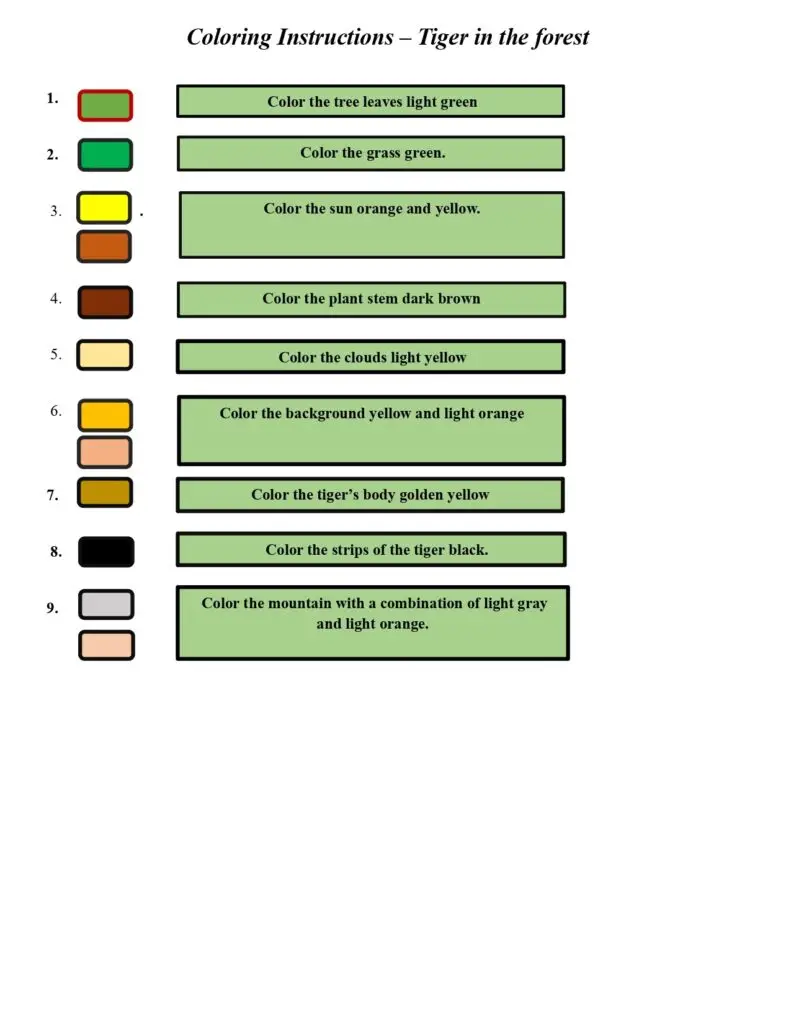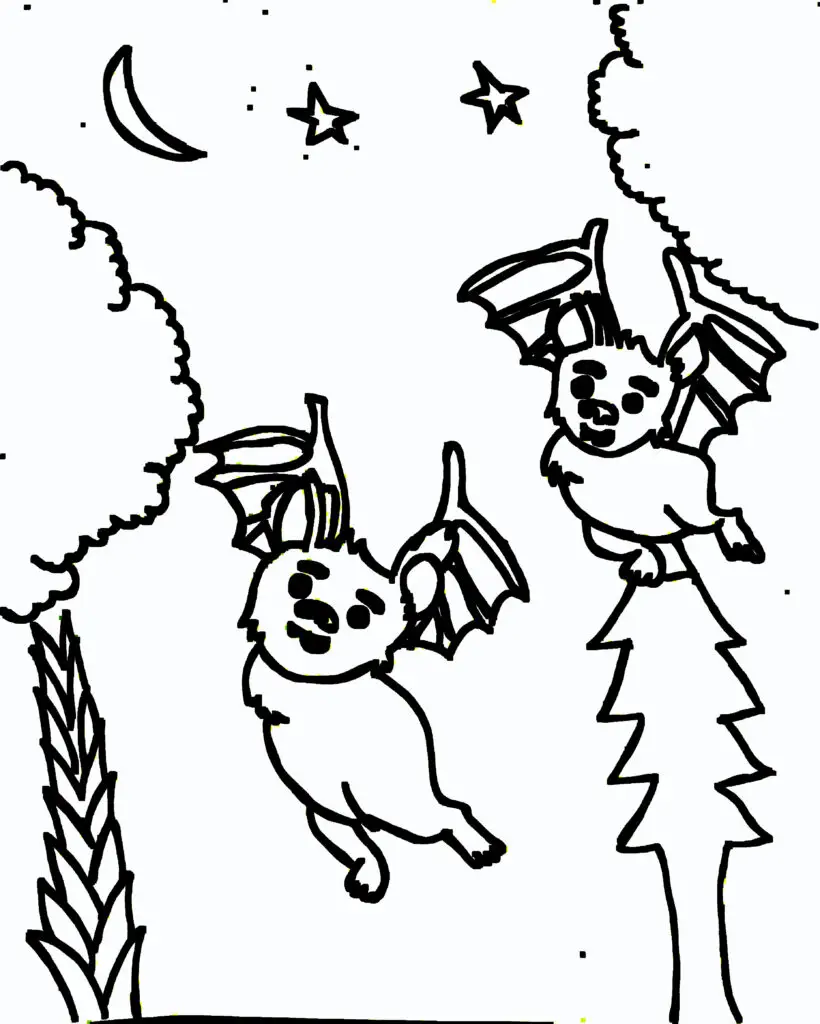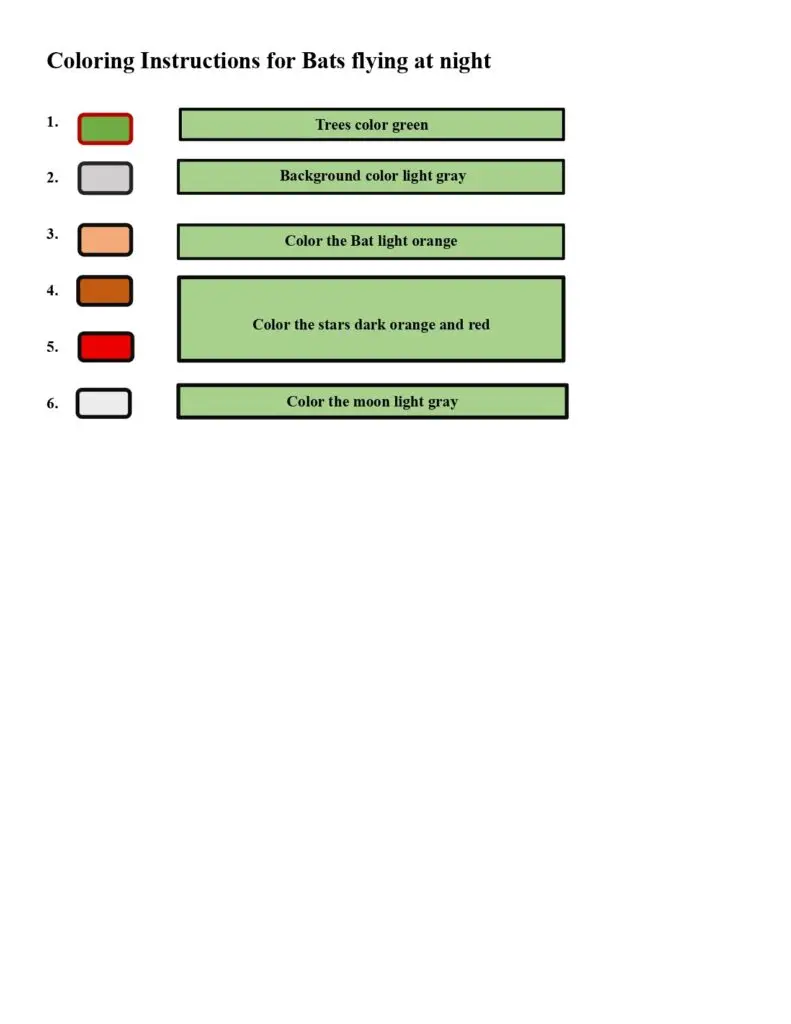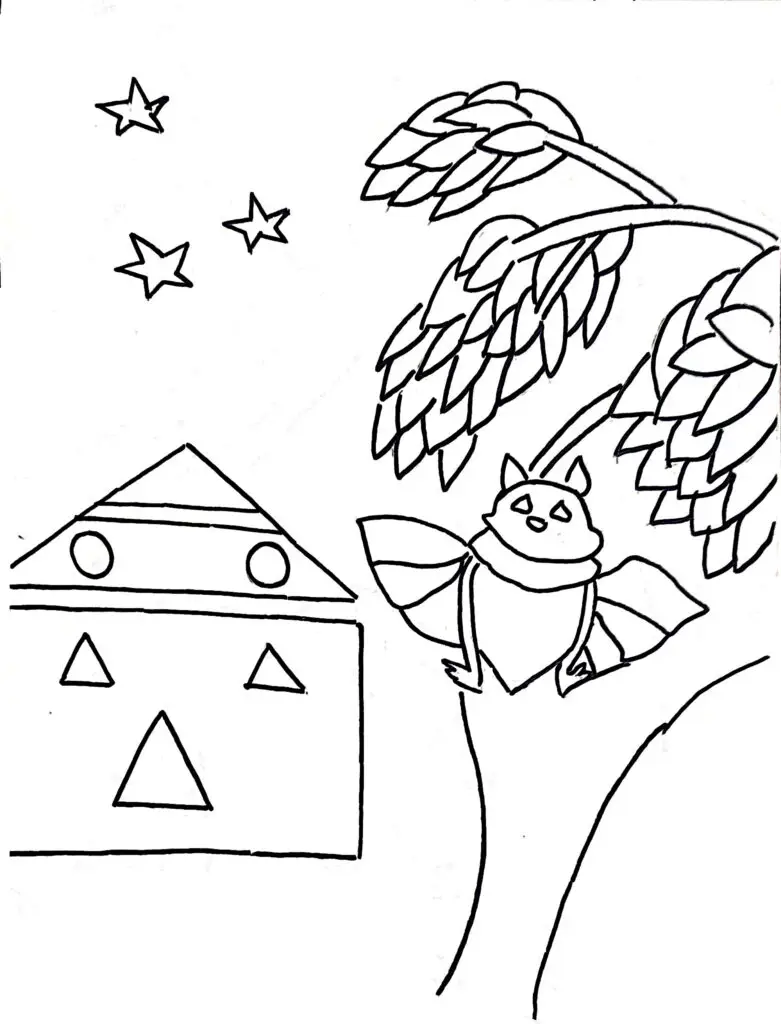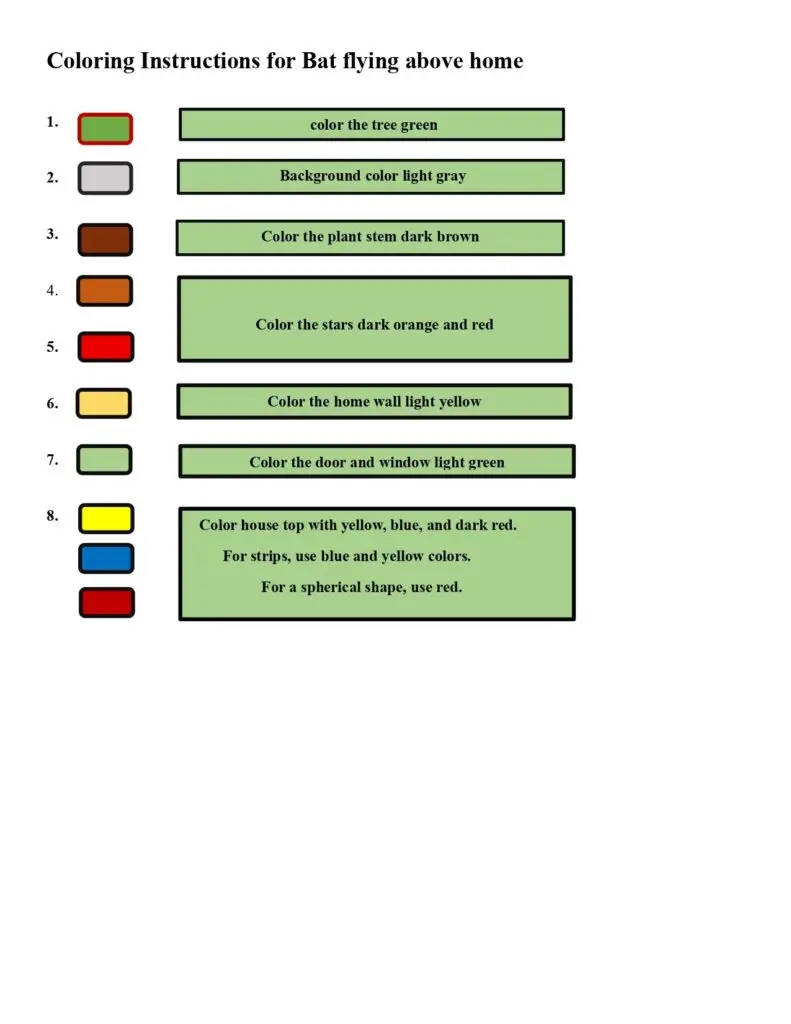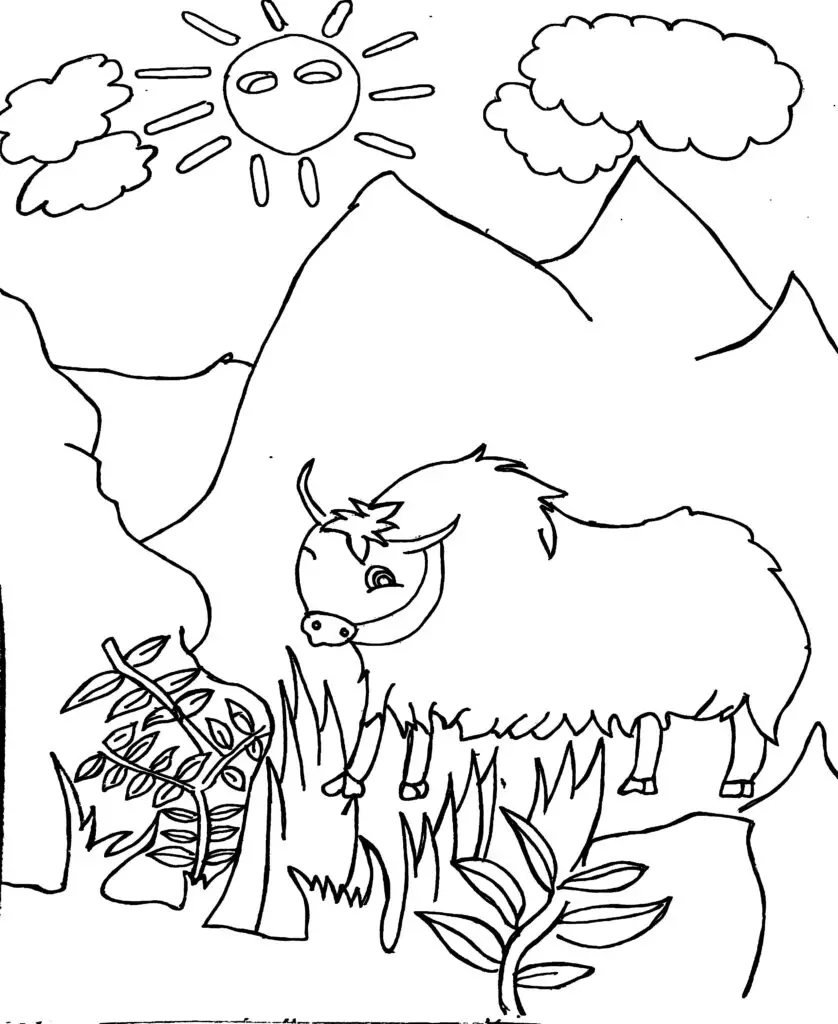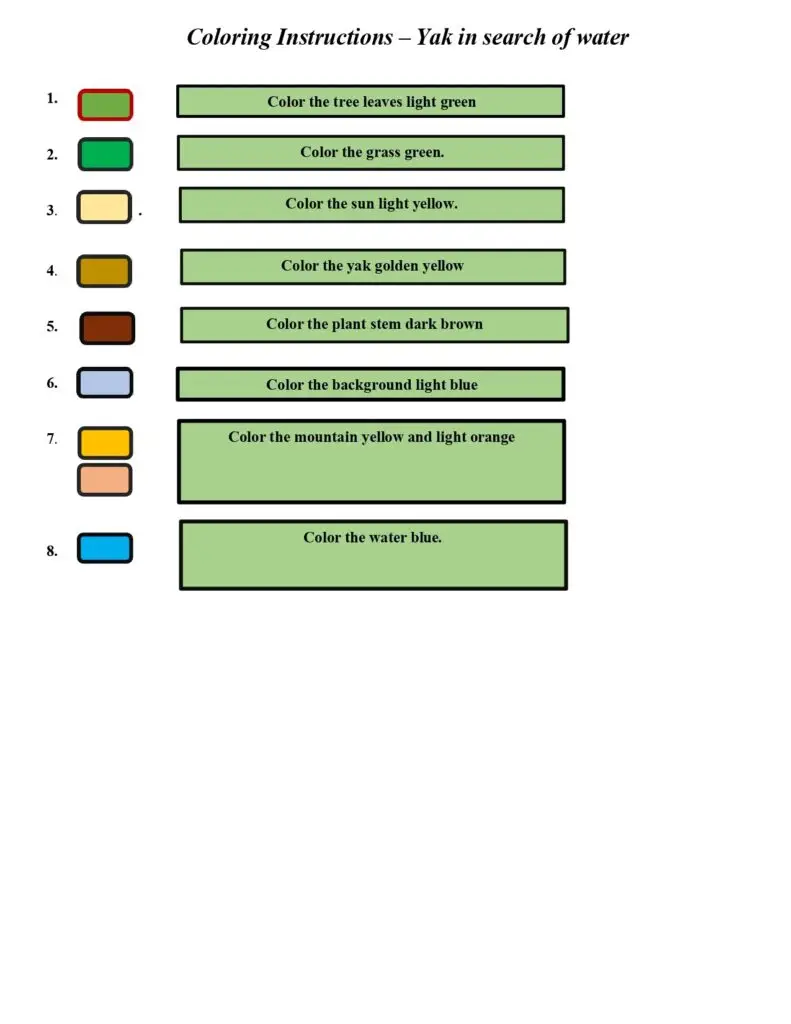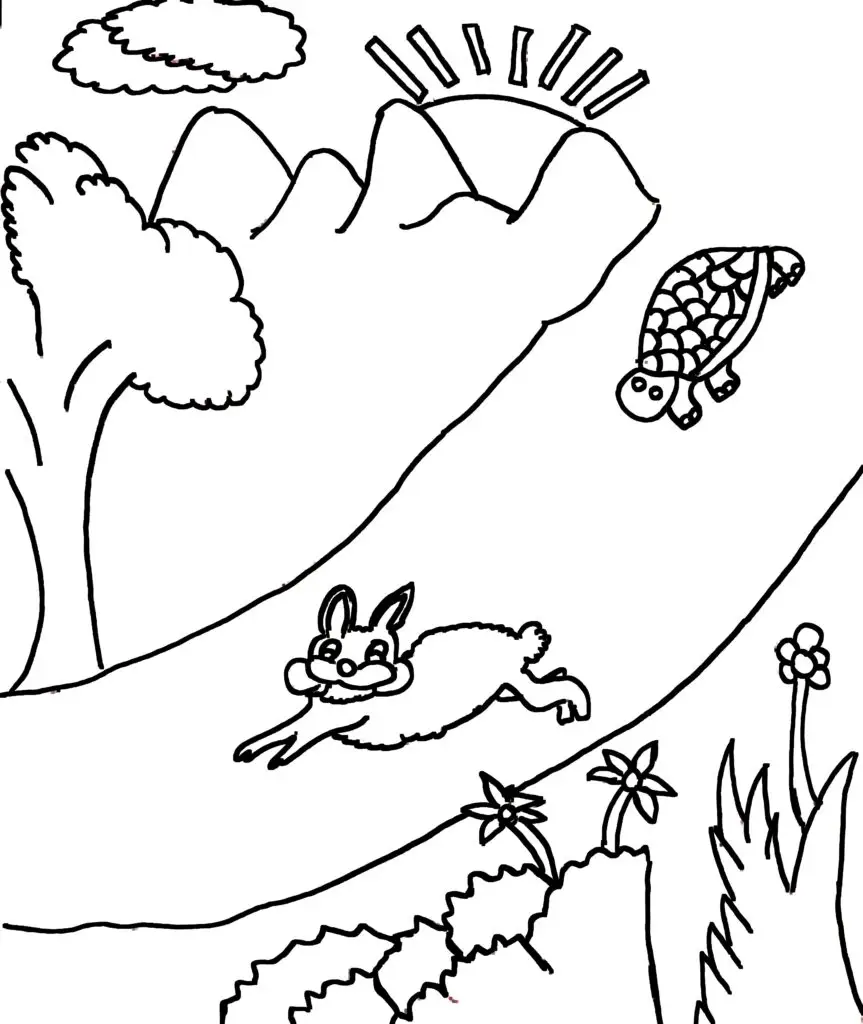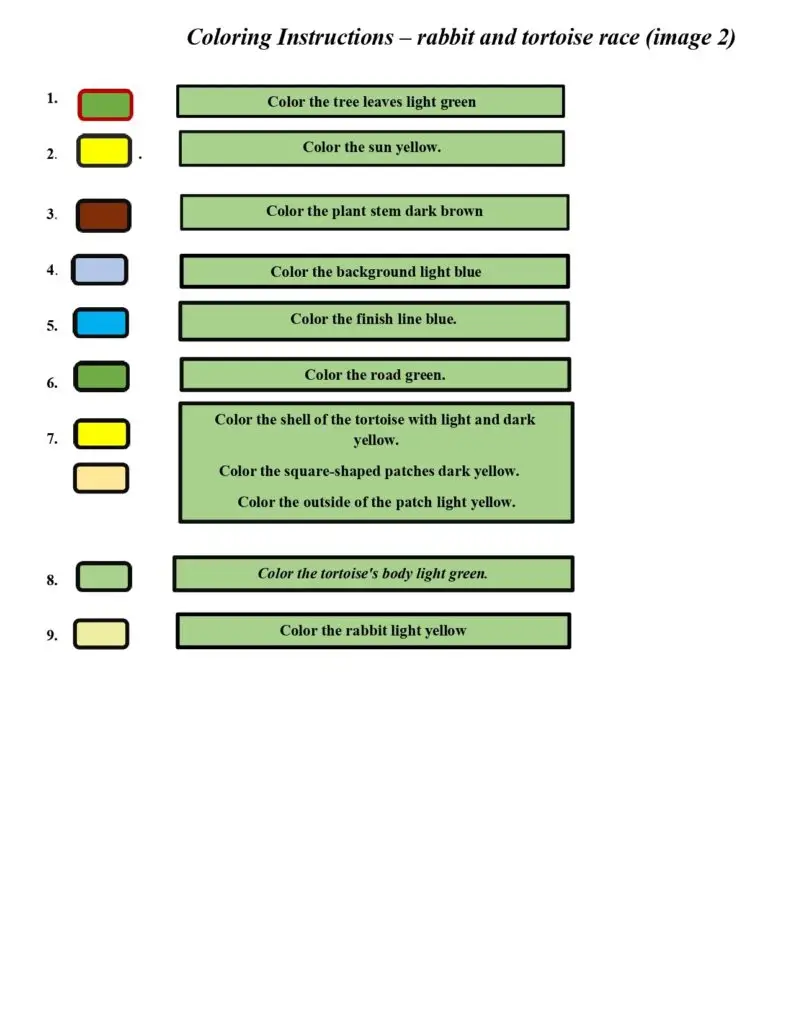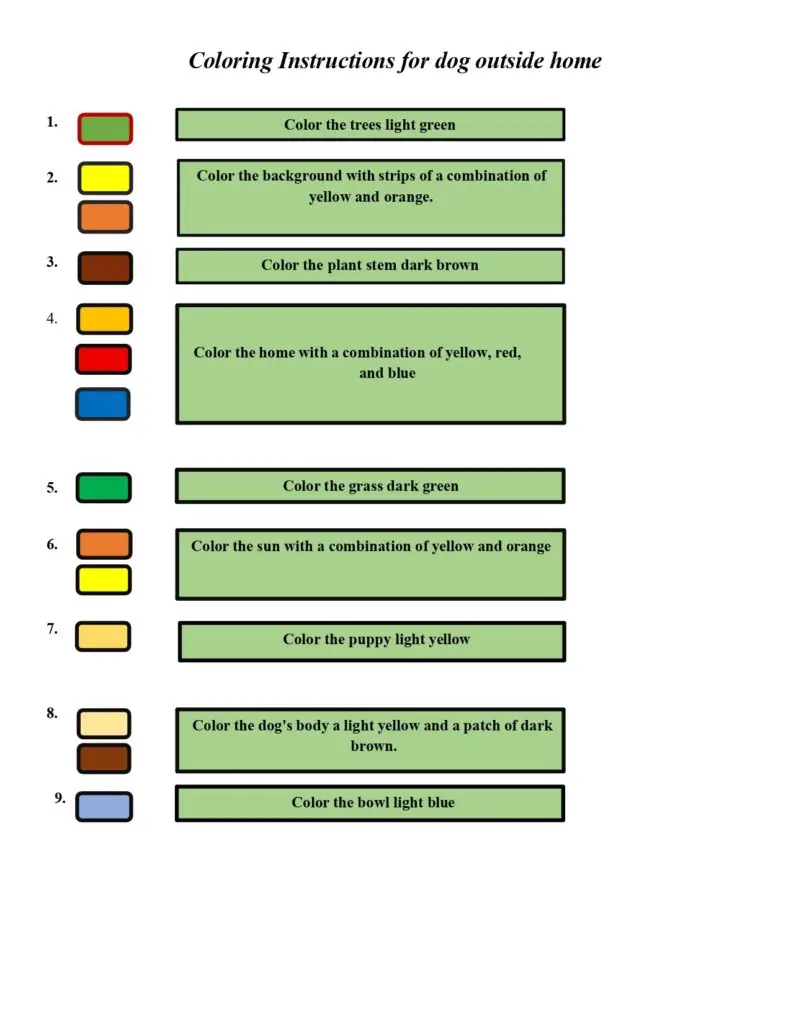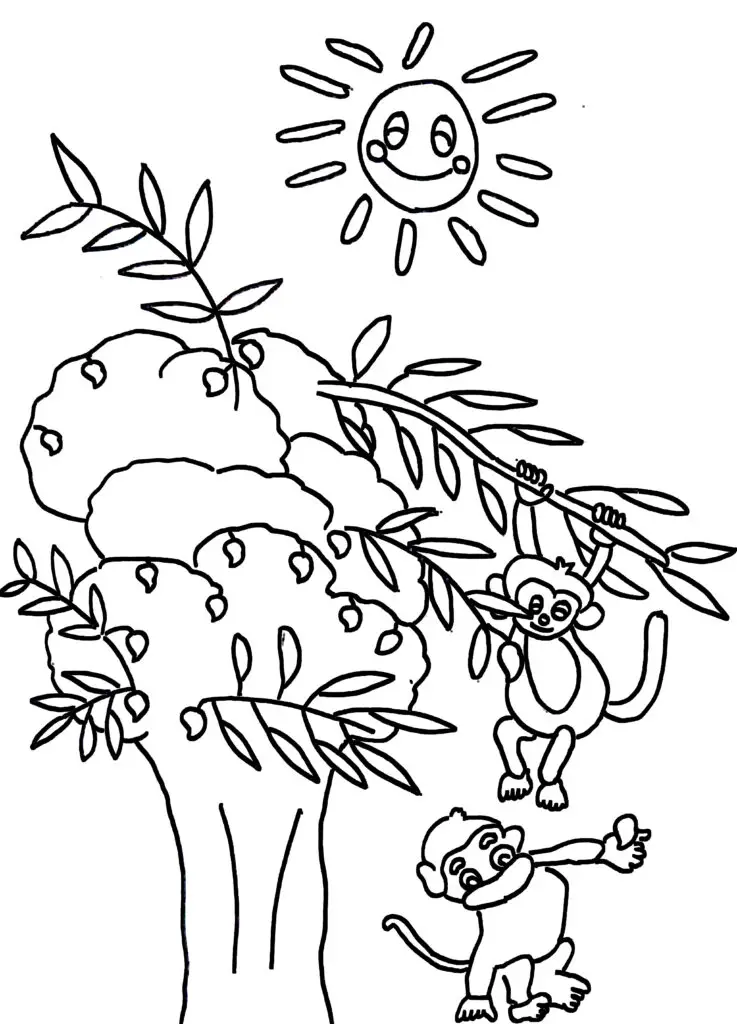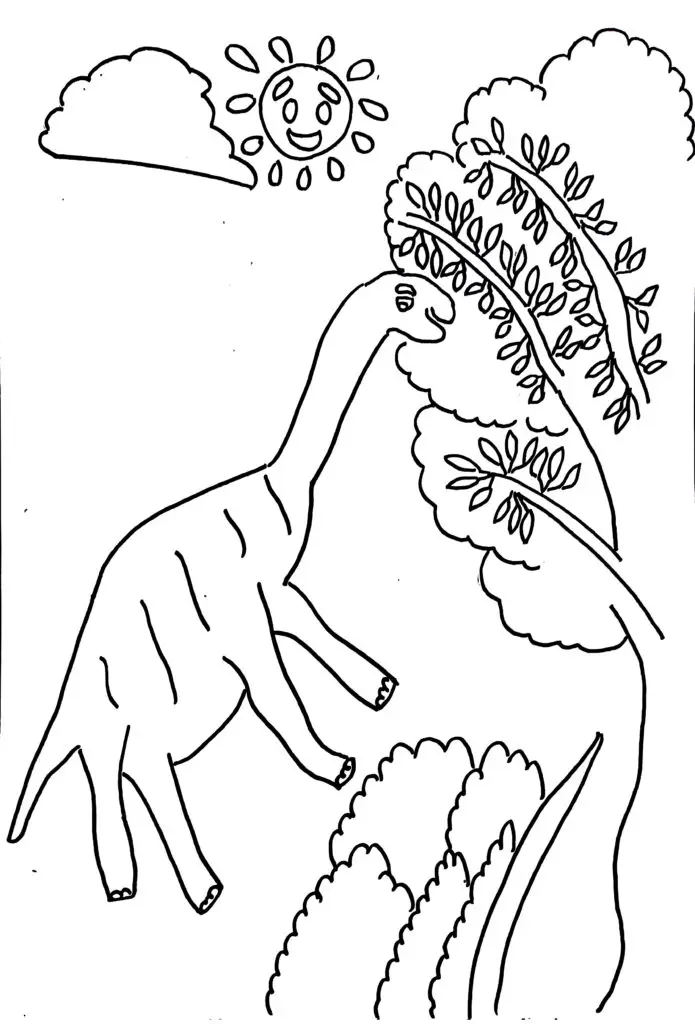Animal colouring pages invite children and adults alike to dive into the wild world of animals while having fun with colors. These pages feature creatures from the jungles, oceans, forests, and even your own backyard. As you color each animal, you also discover fun and interesting facts about them. Facts like, did you know how many hearts an octopus has in its body? Or that elephants can “hear” with their feet by picking up vibrations on the ground? With animal colouring pages, you bring tigers, dolphins, pandas, and parrots to life while learning what makes each one special.
Kids often feel more curious about wildlife when they interact with animals creatively. These pages promote focus, spark imagination, and help build fine motor skills. Parents and teachers use them to turn playtime into an educational adventure. Along the way, you’ll uncover even more fun and interesting facts that make each animal unique and exciting to learn about.
Fun and interesting Facts (About the characteristics of the tiger)
1.Do you know the biggest wild cats’ size and weight?
Animals like lions, jaguars, leopards, and tigers belong to the wild cat family. Among wild cats, the tiger is the largest animal in the world. The weight of a tiger is up to about 363 kg. The size of a tiger is up to about 10 feet.
2. Do tigers belong to a carnivorous animal group?
Yes, tigers belong to a carnivorous animal group. This means that a tiger eats other animals. Big animals like deer, wild pigs, antelope, and buffalo are part of their routine meals.
Did you know how a tiger hunts animals?
They always hunt for food alone. They come out after dark to hunt. They always strike the animals’ necks and heads. Tigers can walk quietly because they have soft pads on the toes. In search of a meal, they wander around 6–12 miles in the dark. They don’t eat at the hunting sites. They are capable of covering their food when they do not finish it.
What is unique about every tiger?
Each and every tiger has a different fur pattern. Each tiger shows a different stripe design. Every tiger is recognized by the strip design.
5. Did you have an idea about the lifespan of a tiger?
In general, a tiger survives 10–15 years. Some exceptions are where tigers survive up to 20 years.
Did you know how many subspecies of tiger there are?
All over the world, there are 6 subspecies of tiger. The South China tiger, Bengal tiger, Indochinese tiger, Sumatran tiger, Malayan tiger, and Amur tiger are these subspecies
References
- Tiger | Facts, Information, Pictures, & Habitat | Britannica
- Big Cats Biological Classification | Taxonomy
- https://en.wikipedia.org/wiki/Tiger
- https://kids.nationalgeographic.com/animals/mammals/facts/tiger
- https://kids.britannica.com/kids/article/tiger/353858
- https://study.com/academy/lesson/tiger-facts-habitat-types.html
To download PDF click here – Fun and interesting facts (About the characteristics of the tiger)
Animal Colouring pages – A tiger in the Forest
A tiger sits peacefully in the jungle. Strong and beautiful, the tiger is surrounded by lush green trees. The soft, long grass grows gently around its feet. In the background, a majestic mountain stands tall, and the bright sun shines high in the sky. White, fluffy clouds float gently above, adding to the calm and serene atmosphere. This vibrant jungle scene captures the beauty of nature — perfect for an animal colouring pages, tiger coloring page, or even a wild animal coloring page! The tiger’s bright eyes quietly observe the world, bringing life to the peaceful setting. The entire landscape, from the colorful sky to the leafy trees and the graceful tiger, is a wonderful opportunity for creativity.
Whether you’re a child or an adult, fun colouring pages like this one let your imagination run wild. Add your favorite shades to the jungle, the clouds, and the proud tiger. This scene is more than just a picture — it’s a canvas for your creativity. Dive into the joy of fun colouring pages and bring this wild world to life!
Fun and interesting Facts (About the unique properties of the bat)
1. Did you know which class Bat belongs to?
There are around 1400 species of bats that are located in different parts of the world. Bats come under the class of vertebrates. One characteristic that separates bats from other mammals is their ability to fly.
2. Did you know about the echolocation process, and how bats utilize it?
In echolocation, the bat makes a sound, and this sound bounces back towards the bat. The mouth and nose are used by bats for sending waves of sound. These waves will come back to the bat’s ear. From the echo of these sound waves, a bat can create a picture of an object that is present around them.
3. Did you know about the lifespan of bats?
The longevity of flying mammals, bats, is about 30 years. A few of these mammals can survive up to 41 years.
4. Do you know the speed at which a bat can fly?
They can hover at a maximum speed of 60 mph. A few species of bat can fly more than 60 mph.
5. Did you know the eating capacity of bats?
They can eat insects of their own weight. About 1200 insects can be swallowed by a bat in one hour.
6. Do you know the name of the species resistant to scorpion stings?
The species of bat with resistance to dangerous scorpion venom is the Pallid bat. They are able to remain unhurt by the sting of the Arizona bark scorpion.
7. Did you know what is called a baby bat?
Baby bats are known as pups. Most bats have one pup each year. Pup bats depend on the breast milk of their mother, like other mammals.
References
- https://www.britannica.com/animal/bat-mammal
- https://www.britannica.com/list/5-surprising-facts-about-bats
- https://www.sciencekids.co.nz/sciencefacts/animals/bat.html
- https://en.wikipedia.org/wiki/Pallid_bat
- Study finds pallid bat is unfazed by venom of Arizona bark scorpion
- https://www.natgeokids.com/uk/discover/animals/general-animals/bat-facts/
To download PDF click here – Fun and Interesting facts (About the unique properties of the bat)
Animal Colouring pages – Bat flying at night
This page shows a bat flying at night. The bat is searching for food. It spreads its wings wide. The sky is dark and calm. The moon shines brightly above. Stars sparkle around the moon. The bat looks strong and fast. Behind the bat, some trees stand tall. The trees look quiet in the night. The bat moves through the sky quickly.
Its eyes are open wide. Kids can color the bat dark brown or black. The moon can be yellow or white. This page gives a fun night scene. Children will enjoy coloring this cool flying bat.
Fun and interesting facts (Some facts about the bat)
1. Are you familiar the smallest and largest species of bat?
The bumblebee bat is the most minuscule species of bat. Among all, the flying foxes are the largest species.
2. Did you know about the predators of bats?
Owls, hawks and snakes are the predators of bats.
3. Did you know about the disease that occurs in bats?
Just like humans, bats can suffer from a disease. The “white-nose syndrome” is a deadly disease that affects hibernating bats . The disease is identified with the development of a white fungus on body parts, mainly the mouth, nose, and wings. Certain species of bats have been decimated because of this deadly disease.
4. Do you think about the habitat of bats and where they reside during the daytime?
Bats occupy every part of the world, except the extreme desert, some of the isolated islands, and the polar region. When talking about bat species, many species live in tropical rain forests. Very few species live in grassland, woodland, and wetland. They also reside in dark caves, aged tree holes, and buildings with aged roofs. Bats float from their feet at the time of sleeping. It is helpful for bats to escape from predators.
5. Did you know some bats are blood suckers?
A very few species of bats suck the blood of animals like cattle and horses. They rarely attack humans. Mexico and the countries of Central and South America are their native land. Vampire bats are blood suckers.
References
- https://en.wikipedia.org/wiki/Kitti%27s_hog-nosed_bat
- https://www.theanimalfiles.com/mammals/bats/bumblebee_bat.html#google_vignette
- https://www.britannica.com/animal/flying-fox
- https://en.wikipedia.org/wiki/Pteropus
- https://www.britannica.com/animal/Old-World-fruit-bat
- https://www.britannica.com/science/white-nose-syndrome
- https://en.wikipedia.org/wiki/White-nose_syndrome
- https://www.britannica.com/animal/bat-mammal
- https://en.wikipedia.org/wiki/Tricolored_bat
- https://en.wikipedia.org/wiki/Little_brown_bat
- https://onlinelibrary.wiley.com/doi/10.1155/2013/187415https://en.wikipedia.org/wiki/Vampire_bat
- https:/kids.nationalgeographic.com/animals/mammals/facts/vampire-bat
- https://www.labxchange.org/library/items/lb:LabXchange:159bcdf6:html:1
To download PDF click here – Fun and Interesting facts (Some facts about the bat)
Animal colouring pages – bat flying above home
A bat flies above a house, wings spread wide as it soars through the night sky. Behind the bat, a tall plant rises, its leaves outlined by the glow of distant stars. The stars shine brightly, creating a magical backdrop for this peaceful nighttime scene. The bat adds excitement and mystery, making the moment feel alive and full of energy.
This scene fits perfectly into animal colouring pages, offering kids and adults a fun, creative way to explore nature. Every line encourages imagination, turning a simple night flight into a colorful adventure filled with life, movement, and artistic expression.
Fun and interesting Facts (Some facts about the yak)
1. Which family did the yak belong to
A huge, furry-haired, and long-horned animal that belongs to the bovid group and is native to the Himalayas is known as a yak. In this region, it plays an important role in the ecology and the earthly culture.
2. Did you know that the yak is an herbivorous animal?
Yaks eat only plants and grass. So they come under the herbivorous group of animals.
3. Are yaks pets?
People of this region use them to carry loads. They are also used as pets. Besides that, they are used for meat and wool. Yaks can be an alternative to cows as domestic animals. They are becoming more popular in the world as an alternative to cows.
4. How many species of yaks are there?
There are two varieties of yak: wild yak and domestic yak. The most distinguishing feature is their size. The wild yak is larger than domestic yak. The wild yak is scientifically classified as Bos mutus. The domestic yak is scientifically classified as Bos grunniens.
References
- https://www.treehugger.com/yak-facts-4869734
- https://en.wikipedia.org/wiki/Yak
- https://kids.britannica.com/scholars/article/yak/77724
- https://animals.howstuffworks.com/mammals/yak.htm
- https://www.asianwildcattle.org/wild-yak.html
- https://en.wikipedia.org/wiki/Wild_yak
To download PDF click here – Fun and interesting facts ( Some facts about the yak))
Animal Colouring pages -Yak In a Grassland
This page shows a yak in a grassland. The yak is walking slowly. It is looking for food. The grass is green and soft. Behind the yak, there is a big mountain range. The mountains are tall and wide. Some clouds are in the sky. The sun is shining. The air looks fresh and clean. The yak has thick hair. Kids can color it with brown or black. The clouds can be white or gray. This page is made for fun. Children will enjoy filling it with bright and pretty colors.
Fun and interesting facts ( Some interesting facts about the yak)
1. Do you know the temperature conditions a yak can survive?
according to a study by the U.N., a yak can live in cold temperatures as low as -40 degrees centigrade. Wild yaks, which are ruminant grazers, move to the lower elevations in some seasons to find grass and herbs. When there are extremely hot conditions, they again come back to higher elevations to eat mosses and lichens. Yaks have very few sweat glands in their skin that are not very functional. Additionally, a yak also has bulky fur on its body. They are unable to survive prolonged exposure to heat or environments below a certain altitude, i.e. about 3000 meters.
2. What if water gets converted into snow?
Yaks eat snow and fulfill their water needs.
3. Do yaks reside in a group or alone?
They reside in a group of about twenty-five. Mature males live either alone or in small groups.
4. What is called the newborn baby yak?
The newborn of a yak is called a Calf.
References
- https://www.treehugger.com/yak-facts-4869734
- https://en.wikipedia.org/wiki/Yak
- https://kids.britannica.com/scholars/article/yak/77724
- https://animals.howstuffworks.com/mammals/yak.htm
- https://www.asianwildcattle.org/wild-yak.html
- https://en.wikipedia.org/wiki/Wild_yak
To download PDF click here – Fun and interesting facts (Some interesting facts about the yak)
Animal colouring pages – Yak in search of water
A yak walks across dry land in search of water. Tall grass and green plants grow behind it. The sun shines brightly above, casting light over the land. In the distance, tall mountains rise with a stream flowing down their rocky slopes. Another small water resource sits nearby on the land, waiting to be found. The yak keeps moving, guided by the sights and sounds of nature.
This peaceful scene is perfect for kids who enjoy printable coloring pages. Add your favorite colors to the yak, the sunny sky, and the mountain stream in this fun nature-filled coloring adventure.
fun and Interesting facts (Tortoise’s characteristics and uniqueness)
1. Did you know how tortoises are identified?
Animals that have hard shells on their backs, which are found on land, are called tortoises.
2. Did you know that some tortoises are opportunistically carnivorous?
Tortoises eat plants, grass, flowers and fruit. They are primarily herbivorous. Some tortoises eat small animals like insects for their survival , hence, being called opportunistic carnivores.
3. Did you know tortoises are unable to swim?
It is not easy for tortoise to swim in water because its shell is heavier, and its shape is like a dome. Furthermore, they have sturdy feet, better suited for walking than padding.
4. What is the word for a group of tortoises?
Tortoises would like to live alone. When tortoises are in a group, they are called creeps.
5. Do you know how many parts there are in the shell of a tortoise?
There are three main parts of the shell of the tortoise. The outermost part of a shell is known as the carapace. The innermost part of a shell is known as the plastron. These two parts are bound together by a bridge. Bone and cartilage together form the shell. The function of the shell is protection. On the interior of the shell, there are ribs, a spine, and a collarbone. The shell is covered with scutus. This layer acts as protection for the shell of the tortoise. It protects the tortoises from injury and infection.
6. Do you know how we can identify the approximate age of a tortoise?
There are ring-like structures around the scutes. Approximate age can be calculated by using a growth ring.
7. Did you know that climate conditions affect the color of the shells of the tortoises?
The environment in which tortoises live can affect the color of the shell of the tortoise. Light-colored shells are found on the backs of tortoises, living in hot places. Dark-colored shells are found on the backs of tortoises that live in cool places.
References
https://kids.britannica.com/scholars/article/tortoise/72992
To download PDF click here – Fun and interesting facts(Tortoise’s characteristics and uniqueness)
Animal Colouring pages -Race between tortoise and Rabbit
Get ready to bring this classic fable to life with our fun animal colouring page! In this exciting scene, the rabbit is speeding ahead of the tortoise in a friendly forest race. The road splits the page in two – on one side, there’s a tall tree, a shining sun in the sky, and majestic mountains in the background. On the other side of the road, you’ll find blooming flower plants and a grassy meadow, full of natural beauty.
Kids can enjoy coloring the determined tortoise, the energetic rabbit, and the peaceful landscape around them. A perfect pick for story-themed animal printable coloring pages that teaches patience and perseverance!
Fun and Interesting facts(Tortoise )
1. Did you know tortoises hold their breath for a long time?
Tortoises have the ability to hold their breath for a long time, due to their high tolerance for carbon dioxide.
2. Do you know which is the most popular domestic tortoise species?
The sulcata tortoise is the most popular domesticated tortoise of all the species of tortoise. It is the third-biggest species of tortoise. The sulcata tortoise species can survive more than 100 years. The approximate weight of a sulcata tortoise is 200 pounds.
3. Do you know from which language the word tortoise is derived?
The word tortoise is actually derived from the Latin word, tortus. Tortus means twisted. The name tortoise may be due to its unique feature: bent legs. They can manage to live life on land because of their sturdy legs. Tortoises’ forelegs are like an elephant’s legs. Their posterior legs look like pillars. The arrangement helps them with movement on land. The legs of tortoises have sharp claws which help them to dig and move to different territories.
4. Do you know why tortoises have a low survival rate?
The survival rate of tortoises is very low. The reason behind such a low birth rate is that as soon as eggs hatch, they are eaten by birds and other predators. One reason behind this is that adult tortoises do not take care of baby tortoises and eggs.
5. Do you know to which family the tortoise belongs?
They belong to the family Testudinidae. These are found in nearly all regions of the world except Australia and Antarctica.
6. Do you know under which class tortoises come?
The tortoise belongs to the reptile class.
References
- https://www.britannica.com/animal/tortoise
- https://en.wikipedia.org/wiki/Tortoise
- https://kids.britannica.com/scholars/article/tortoise/72992
To download PDF click here – Fun and interesting facts (Tortoise)
Animal colouring pages – Rabbit and tortoise race (image 2)
The sun is in the sky. The sun is shining brightly. The sun watches over the race. The rabbit is in deep sleep under a shady tree, confident he has plenty of time. Meanwhile, the tortoise keeps moving steadily, never stopping, never slowing. Step by step, he gets closer to the finish line. He is about to win the race with focus and patience, proving speed isn’t everything. The rabbit stirs too late, realizing his mistake.
This classic tale teaches the power of persistence. Parents and teachers can bring the story to life with animal printable coloring pages that feature scenes from the race. These pages are fun and educational, perfect for children learning about values like hard work and humility. As the tortoise nears victory, the message is clear—slow and steady really does win the race.
Fun and Interesting facts (Dog characteristics)
1. Did you know how dogs identify smells?
Dogs have an excess number of olfactory receptors compared to humans. In humans, there are 6 million olfactory receptors, while in dogs, there are about 300 million olfactory receptors for processing scent. Also, the part of the brain that is the olfactory bulb, which plays a role in the processes of smell, is large in dogs. Dogs are able to inhale and exhale air very rapidly. Besides that, the nose of the dog always remains moist. All the characteristics lead to easy identification of smell.
2. Did you know how one can identify a dog?
In humans, each person has a unique fingerprint. Just like humans, each dog shows a different nose print. So, if someone has to identify a dog, it can be identified by a nose print.
3. Did you know when, historically, dog domestication started?
Dogs evolved from wolves. Over 20000 years ago, dogs were domesticated. The skull, teeth, and paws of wolves shrank. In the course of evolution, wolves became more amenable and tractable. During evolution, the wolf species became extinct.
4. Do you know how many words a dog can learn?
Dogs can learn like humans. With proper training, a dog can manage to learn about 100 words, and gestures.
5. Do you have an idea whether dogs are either left-pawed or right-pawed ?
As we know, humans are either left-handed or right-handed. Dogs are also either left-pawed or right-pawed.
6. Do you know how many taste buds there are in dogs?
In dogs, there are 1700 taste buds.
7. Do you know how a dog can breathe?
A dog has the ability to breathe from the nose as well as the mouth at the same time.
8. Do you know about the sweating process in dogs?
In humans, sweating occurs under the armpits, while in the case of dogs, sweating occurs through the paws.The process of sweating keeps the dog cool. It also causes better gripping.
References
- https://www.britannica.com/animal/dog
- https://en.wikipedia.org/wiki/Domestication_of_the_dog
- https://www.ndtv.com/science/wolves-domesticated-themselves-into-dogs-to-have-easy-access-to-food-study-7792906
- https://www.livescience.com/animals/dogs/dogs-may-have-domesticated-themselves-because-they-really-liked-snacks-model-suggests
- https://www.newscientist.com/article/2264329-humans-may-have-domesticated-dogs-by-accident-by-sharing-excess-meat/
- https://www.petmd.com/dog/general-health/do-dogs-have-taste-buds
- https://www.natgeokids.com/uk/discover/animals/general-animals/dog-facts/
To download PDF click here – Fun and interesting facts (Dog characteristics)
Animal Colouring Pages – Cute Dog and Puppy Outside Their House
Enjoy this adorable animal colouring page featuring a sweet moment between a baby dog sitting inside a house and an adult dog sitting outside their cozy house. Behind the house, two tall trees stretch toward the sky, with the sun shining brightly and soft clouds floating by. In front of the dogs, there’s a milk pot placed on the ground, ready for them to enjoy.
This charming scene is perfect for kids who love dogs and want to add their favorite colors to a peaceful, outdoor setting. A fun and heartwarming addition to any collection of animal colouring pages!
Fun and interesting facts (Monkey)
1. Where does the monkey sleep at night?
Monkeys are able to choose their sleeping place, which is trees. Many monkeys sleep in trees at night. They select a tree that is isolated, and that has branches far away from each other.Monkeys choose this type of tree because it is not easy for predators to move from such far-away branches of the tree, and hence monkeys can protect themselves from predators.
2. Monkeys come under which class according to their eating habits?
Monkeys are distributed in various regions of the earth. According to their native places, they can eat nuts, fruits, leaves, flowers, bark, roots, vegetables, rodents, birds, and invertebrates. There are about 260 species of monkey across the world. Monkeys show variation in diet habits according to species. Monkeys are omnivorous.
3. Which is the smallest monkey in the world?
Among all the species, the pygmy marmoset, which has the scientific name Callithrix pygmaea, is the smallest monkey in the world. The length of the pygmy marmoset is about 13 cm, and the weight measures about 4 ounces. The Amazon basin of South America is the native land of pygmy marmosets. The countries including Bolivia, Brazil, Colombia, Ecuador, and Peru are regions where the pygmy marmoset is native.
4. Did you know monkeys are divided into how many groups?
New World monkeys and Old World monkeys are two groups into which all the species of monkey are divided. New World monkeys are native to Central and South America, while Old World monkeys are native to Asia and Africa. New World monkeys have prehensile tails. A prehensile tail is useful for holding objects as well as for climbing, feeding, and balancing. In old-world monkeys, prehensile tails are absent. It means their tail does not have abilities like climbing, feeding, balancing, and object holding.
5. Do you know the average lifespan of a monkey?
The average lifespan of a monkey is about 20 years. There are some exceptions where monkeys can survive up to 40 years.
References
https://www.livescience.com/27944-monkeys.html
https://kids.britannica.com/kids/article/monkey/353485
https://www.treehugger.com/things-you-didnt-know-about-monkeys-4869728
To download PDF click here – Fun and interesting facts (Monkey)
Fun and interesting facts (about dinosaur)
1. How many species of dinosaurs were there?
Although the exact number of species is unknown due to the inadequate fossil record, paleontologists estimate that there were about 700 species of dinosaurs. These species differed in size, shape, and physical characteristics, such as scales, feathers, or armor.
2. From which language did the name ‘dinosaur’ originate?
The term dinosaur is obtained from the Greek language deinos (terrible) and sauros (lizard), so the name means terrible lizard. The term was discovered by Sir Richard Owen, an English anatomist.
3. When were dinosaurs extinct from the earth?
Dinosaurs were a diverse group of reptiles that went extinct from Earth about 66 million years ago. They existed during the Mesozoic Era, which includes the Triassic, Jurassic, and Cretaceous periods.
4. Which was the largest land-based dinosaur?
The Argentinosaurus is considered to be one of the largest terrestrial dinosaurs. It is estimated to be about 30 to 40 metres in length, with a height of around 21 metres, and 90 to 100 metric tons in weight. The Argentinosaurus belonged to the titanosaur family of the Cretaceous period. It was a herbivore, which means it fed only on plants. Their fossils were found in Argentina.
5. Which was the oldest dinosaur on land?
The oldest dinosaur is a subject of debate. Some of the earliest known dinosaurs are Eoraptor and Nyasasaurus parringtoni. Eoraptor is thought to be one of the oldest dinosaurs, which lived on the Earth about 231 million years ago during the Triassic period. It is estimated to be about 3 feet in length and weigh about 10 kilograms. It was bipedal, had short hands with three fingers, and a long tail. It was an omnivore, and its fossils were discovered in Northwest Argentina. Similarly, Nyasasaurus parringtoni is another of the oldest dinosaurs, which lived on Earth about 243 million years ago during the Triassic period. It was estimated to be about 10 feet in length and 135 pounds in weight. Its fossils were discovered in Tanzania.
Fun and interesting facts (Kangaroos)
1. What is the importance of kangaroos in Australia?
The kangaroo is the national animal of Australia. They have had cultural significance since ancient times in Australia, as they have appeared in art and stories. They are depicted in ancient rock paintings. Kangaroos are also depicted on the Australian coat of arms and Australian national coins and are used as sports mascots in Australia.
2. How many common species of kangaroo are there?
Macropus is the genus name for kangaroos that belong to the family Macropodidae. They are initially divided into four species: the Red Kangaroo (Macropus rufus), the Eastern Grey Kangaroo (Macropus giganteus), the Western Grey Kangaroo (Macropus fuliginosus), and the Antilopine Kangaroo (Macropus antilopinus). Currently, the red kangaroo and the antilopine kangaroo are reclassified and are named Osphranter rufus and Osphranter antilopinus.
3. At what speed can a kangaroo run?
A kangaroo can generally run up to about 20–25 km/h, but its maximum speed varies up to 50–60 km/h. They are able to achieve these speeds because of their powerful hind legs and muscular tail. They are also able to maintain a steady speed of about 40 km/h for short distances.
4. How did the word “kangaroo” originate?
The word ‘kangaroo’ originated from the Aboriginal Australian word ‘gangurru’ (refers to the Eastern Grey Kangaroo), which was given by the Guugu Yimithirr people of North Queensland, Australia.
5. What is the native land of kangaroos?
Kangaroos are native to the Australian subcontinent. They are found in Australia and nearby islands.




